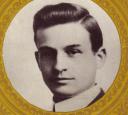This is the first in a series of posts relating to various historians of the Civil War era. While I’ve always found the war itself fascinating, of equal interest to me has been the life and career of those who have chronicled it. I guess in some small way I hope through studying their lives and work that somehow it might give me insight on the most effective way to do my own research. First, it should be understood these posts do not claim any originality nor do they purport to be in-depth. They are based on research I have conducted based on their work as well as from various secondary sources which are easily available. I claim no special insight into their work, and I will even admit that it has been several years since I read many of their books. I hope to bring to light some facts about these (mainly) men and how they have influenced and affected my own study of the war.
In a time when the term “preeminent” or “greatest” is thrown around as casually as a frisbee, one might be forgiven if they balk when describing James Garfield Randall as the preeminent Lincoln scholar of the 20th century. However, in this case, it’s apt. While much of Randall’s views have been questioned (in many cases quite effectively), it’s hard to argue that anyone has had more effect on the study of Lincoln and the Civil War than this quiet, unassuming man from the Midwest. Yet, to many, the only reaction given when asked who J.G. Randall was is a quizzical look. In spite of his unquestioned leading role in the field of the Middle Period, no full-scale biography of Randall is available. (Note: in trying to find a picture of Randall for this article, I was forced to scan this image from the back of his wife’s account of their marriage. I could find nothing on the Internet).
Randall was born on June 24, 1881 in Indianapolis. From a young age he was fascinated by the life of Abraham Lincoln. According to his New York Times obituary in 1953, Randall’s fascination began after he read Ida Tarbell’s articles on Lincoln in McClure’s Magazine. A budding artist, Randall drew pictures of Lincoln and at the age of 12 completed an oil painting that, while rough and a bit sinister looking, is a workmanlike image of the 16 president. In 1903, Randall graduated from Butler College. After receiving his Master’s degree in Sociology from the University of Chicago, Randall worked on getting his Ph.D. in history there under the tutelage of Andrew McLaughlin. In 1911 he was awarded the degree and two years later, his dissertation was published under the title The Confiscation of Property During the Civil War.
Married in 1911 to a Butler classmate named Edith Laura Abbott, Randall, who was now teaching at Roanoke College in Virginia, was made a widower two years later after she died from surgical complications. After Edith’s death, Randall threw himself into his work in an attempt to mask his pain. His second wife, Ruth, wrote in her book I Ruth that “My mother had learned from his landlady how sad and lonely he was. He could not bear to go to parties or other social engagements and was leading a joyless existence, devoting himself only to his teaching and research.” Randall became friends with Ruth’s father, who also taught at Roanoke. “It was a fine thing to be so welcome in the Painter home–even before I knew you,” Randall wrote to Ruth later in life.
As a professor, Randall exacted strict standards from his students. According to James Harvey Young, Randall always maintained a strong interest in the methodology of writing history, and that was always a part of his coursework. Students were expected to maintain the high standards that Randall set for himself.
In 1913, Randall married Ruth Painter and thus began one of the greatest collaborative efforts in American historiography. In her book Ruth pointed out the many times she helped her husband. In her diary just shortly after the couple married, she wrote “Helped Jim go over his article in morning, polishing it up. I read the rough draft aloud and we talk it over and make changes together.” Randall always acknowledged the help he received from Ruth.
When World War I broke out, Randall tried to enlist but was rejected because of low body weight. He served on the staff of the United States Shipping Board instead. A highly ambitious man, Randall yearned to teach and perform research while being affiliated with a major university. He finally got that chance when in 1920, he joined the staff of the History department at the University of Illinois.
Next: Randall and Lincoln begin a life-long partnership.

[…] right, Wick produced a series of highly detailed portraits of historians from James G. Randall (Part 2, Part 3, Part 4, Part 5, Part 6, ) and Bell Irwin Wiley (Part 2 ), to Otto […]